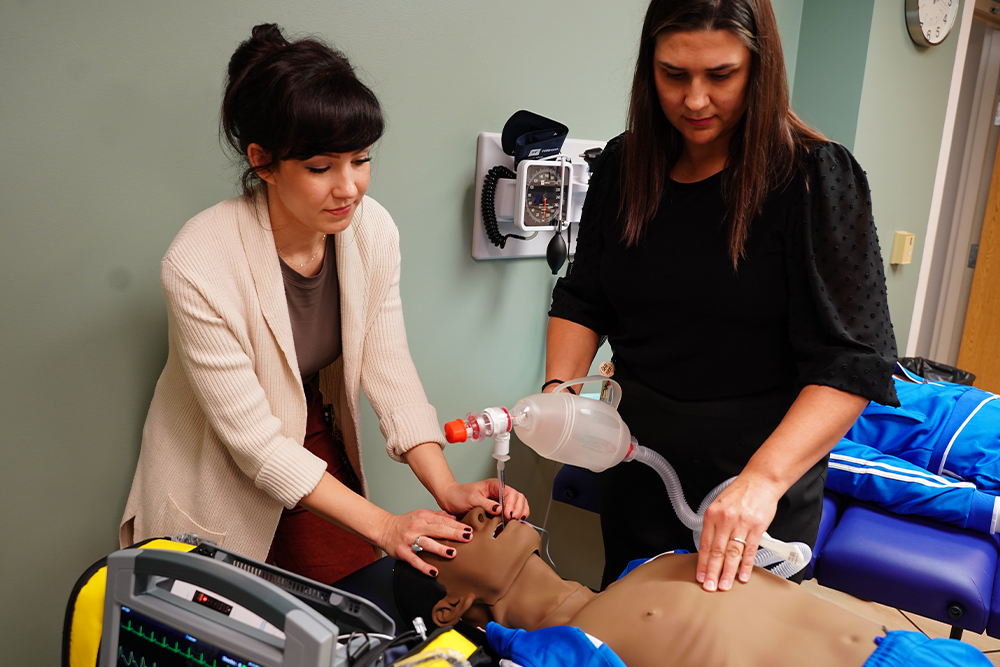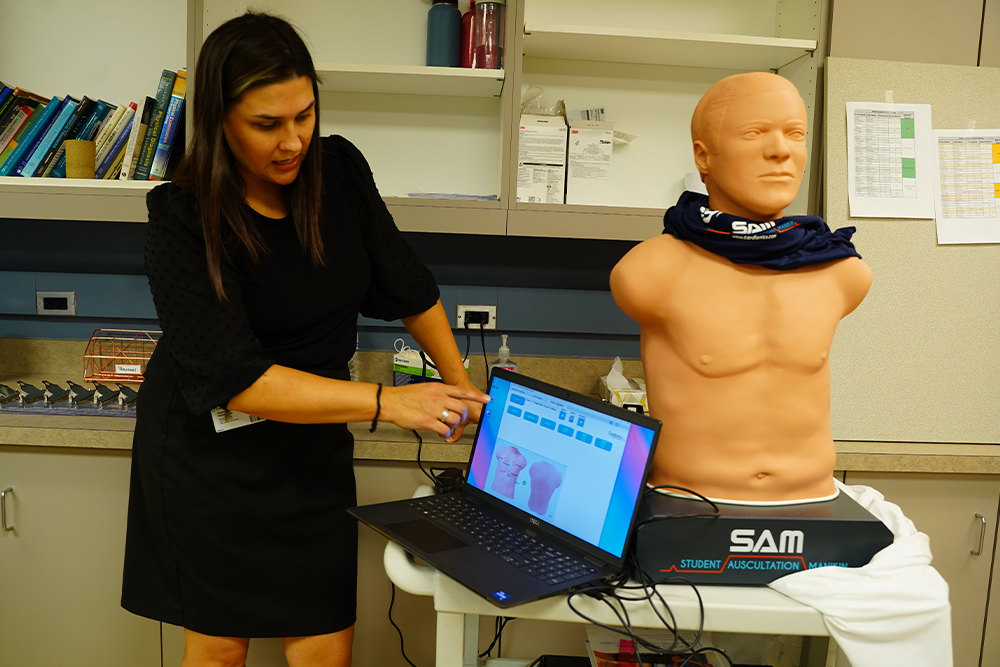
Oakland University William Beaumont School of Medicine recently made a substantial investment that aims to help first- and second-year medical students gain more realistic hands-on training.
The OUWB Clinical Skills Training and Simulation Center (CSTSC) purchased three simulation manikins that provide advanced life support training before medical students are in a clinical setting with patients.
The CSTSC bought two “Atlas the ALS Simulators,” one Student Auscultation Manikin (SAM), and several prostate examination models. The models were purchased during the summer and OUWB students are about to use them for the first time.
“I’m excited to see the difference that we can make for the students,” says Stephanie Marcincavage, director, CSTSC.
About the CSTSC
The CSTSC is located at Corewell Health Beaumont Troy Hospital. It’s housed in an area that previously was a clinic but is now solely used for education.
Home to 16 simulated patient rooms, the CSTSC has separate student and patient assembly areas, classrooms, and video control and observation suites.
Clinical faculty teaching students at the CSTSC come from diverse specialties and those faculty, along with CSTSC leadership, work toward one overarching goal: to provide as realistic a clinical experience as possible in a welcoming environment.
Faculty go about achieving that goal using standardized patients (SPs) and simulation tools like Atlas and SAM.
SPs are people employed by OUWB who are trained to mimic various symptoms and issues so that future physicians can practice on them before doing the real thing.
However, there are some instances where it isn’t practical to use SPs or they are unable to mimic certain conditions.
That’s where simulation models come in.
‘Think faster’
Marcincavage demonstrates how the new SAM model works. |
For a long time, the primary simulation tool used by OUWB students was a “Harvey Heart Sounds” cardiovascular training manikin.
However, Marcincavage says newer manikins are more realistic and offer many additional options.
With the Atlas models, for example, students can practice intubation, CPR, and inserting IVs in arms and legs. Each model’s airway is anatomically realistic and includes a tongue, nasopharynx, oropharynx, uvula, epiglottis, vallecula, vocal cords, esophagus, trachea, thyroid cartilages, and lung. The design of the ribcage allows realistic compression movements during CPR.
Further, each model is connected to a monitor that responds to actions taken by medical students as well as a special tablet that allows faculty and staff to control model responses.
“One of the biggest benefits is that students have to process what is happening in real time,” says Marcincavage. “It’s making them think faster.”
Should students miss something, she adds, faculty and staff can pause the scenario and take advantage of what Marcincavage calls “a teaching moment.”
That also applies to the new SAM model.
SAM offers 100 normal and abnormal cardiac, respiratory, bowel, and bruit sounds. The benefit is that students can auscultate using their own stethoscopes without the noise disturbance from interior mechanics.
“Faculty can tell us that they want to talk about congestive heart failure, for example, so we pull up that case scenario,” says Marcincavage. “Students will watch a short video on congestive heart failure and then use their stethoscopes to listen to the associated sounds.”
‘Make a big difference’
Marcincavage says she plans to continue adding to the CSC’s simulation offerings.
The center is looking at adding female torsos that would be used during the Art and Practice of Medicine and during OB-GYN clerkships.
She also hopes to one day have an immersive simulation room that would look and feel very much like an actual emergency room.
“There are still a lot of things we can do to make a big difference in training medical students,” says Marcincavage. “We’re looking at what we can add to make it work better for the students and help them learn even more.”
For more information, contact Andrew Dietderich, senior marketing specialist, OUWB, at [email protected].
To request an interview, visit the OUWB Communications & Marketing webpage.
This work is licensed under a Creative Commons Attribution-NonCommercial 4.0 International License.


